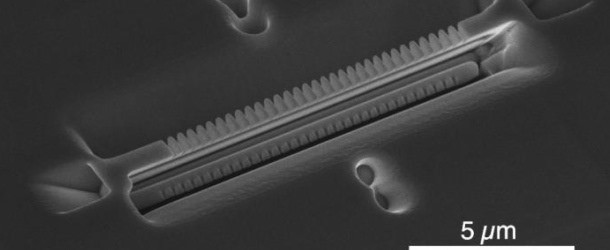Trapped Ytterbium Ions Could Form Backbone of a Quantum Internet

(PhysicsWorld) Ions trapped nanoscale optical cavities could be used to distribute entangled quantum particles over large distances. That is the conclusion of Jonathan Kindem and colleagues at Caltech in the US, who showed that a trapped ion of ytterbium can remain entangled with a photon for long periods of time. Furthermore, the team showed that the ion’s quantum state can be read out when manipulated by laser and microwave pulses. Their achievement could lay the foundations for a future quantum internet.
Quantum computers are becoming a reality as research labs and companies roll out nascent devices. An important next step in this quantum revolution is creating a “quantum internet” across which quantum information can be shared. The delicate nature of quantum information, however, means that it is very difficult to connect quantum computers over long distances.
Kindem’s team now hopes to scale up their experiment to enable information exchange between two real, distant qubits — demonstrating the building blocks of a realistic quantum internet. Within such a network, quantum computers in widely spaced geographical locations could share data and perform calculations together; potentially allowing extremely large computations to take place. It could also enhance the prospects for quantum cryptography by allowing networks of trusted parties to exchange information securely using entangled particles.























